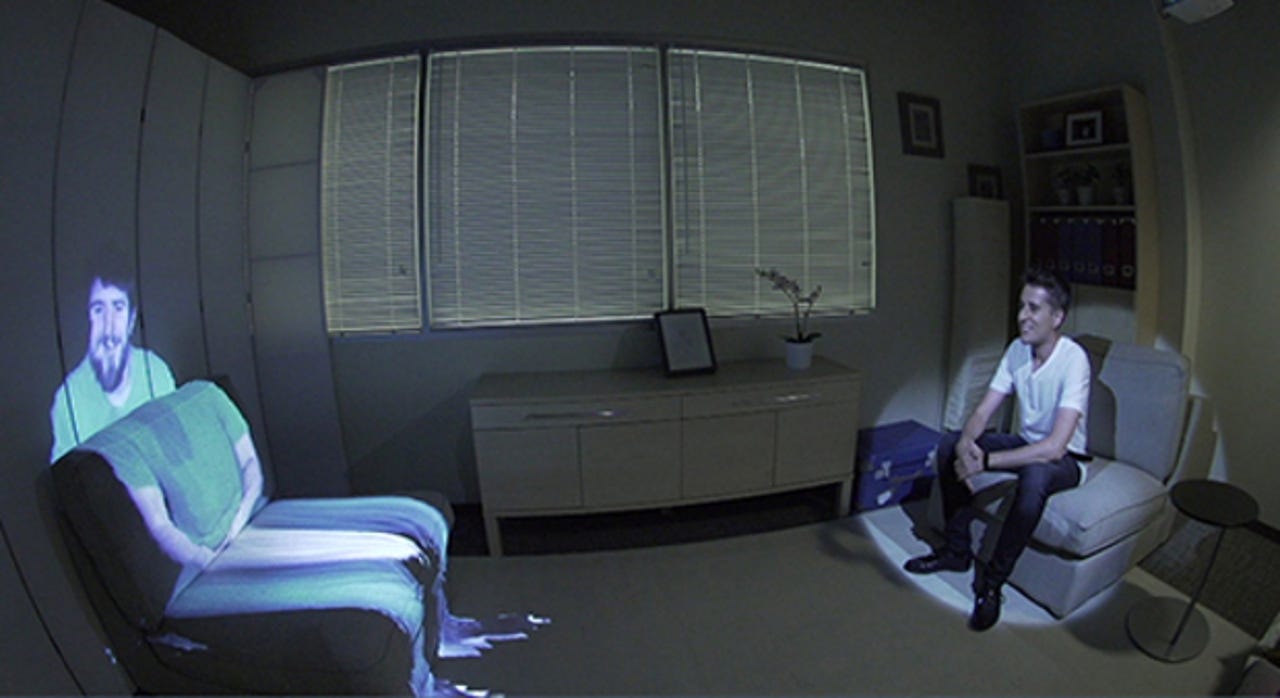Microsoft's Skype killer? Augmented reality for your video calls


Microsoft Research has been comparing its Room2Room augmented-reality technology with face-to-face meetings.
Microsoft wants to use augmented reality to put a life-size virtual copy of the person you're talking to on a video call with you in the room.
The idea of Room2Room, a project from Microsoft Research, is to see whether augmented reality can rival the quality of communication of a face-to-face meeting.
To test whether it can come close, Microsoft fitted a pair of rooms with Kinect depth cameras and projectors to capture 3D images of participants and project a life-size copy of them in each room.
The technology builds on another Microsoft Research project, Room Alive, that used the same set-up for augmented-reality gaming.
The researchers looked at how effective Room2Room is at enabling participants in different rooms to solve a puzzle and compared the results with actual face-to-face meetings and two-dimensional Skype video chats.
The study involved seven pairs of participants, with one participant acting as an instructor who would guide an 'assembler' in another room though the construction of three-dimensional shapes out of cubes. It then measured the time it took to complete the task and asked participants to rate the experience of 'presence'.
As noted by MIT Technology Review, it took about four minutes to build the puzzle when the pair were face-to-face, about seven minutes using Room2Room, and nine minutes when using Skype video chat.
"Quantitative results suggest that, predictably, face-to-face communication is superior in terms of task completion time, sense of presence, and efficiency of communication," the researchers note in the paper, Enabling Life-Size Telepresence in a Projected Augmented Reality Environment.
"Furthermore, using our system instead of Skype led to significant improvements in task completion time, suggesting that our system makes spatially situated tasks easier to perform."
Based on the questionnaire, they found that task partners were "significantly more present" when using Room2Room, compared with two-dimensional images using Skype.
MIT Technology Review also notes that the low-resolution 3D images generated by Room2Room mean it was difficult to tell where a projected person's gaze was aimed, though that could be improved in future.
Some of those improvements may come from Microsoft's other augmented-reality project HoloLens, which it is preparing to give developers this quarter.
Microsoft envisages enterprise and consumer applications for the product. It comes as the race for virtual reality heats up with Google last week signalling it would take the technology seriously in the wake of Facebook-owned Oculus Rift taking pre-orders.